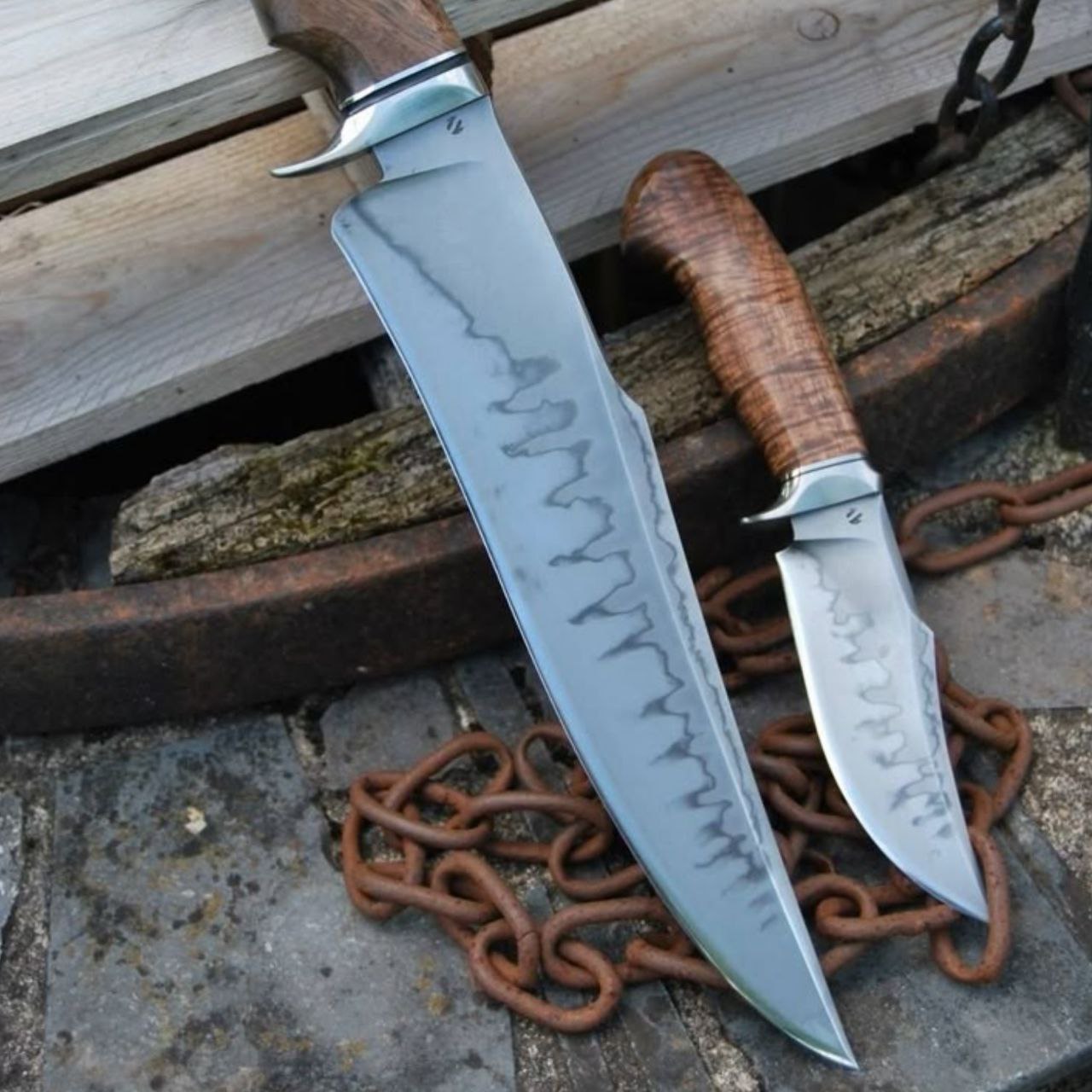To start the process of making a Damascus knife, you’ll need to gather the necessary tools and materials. The first and most important item you’ll need is high-quality steel. Look for steel with a good balance of hardness and toughness, such as 1084 or 15N20.
You’ll also need a forge to heat up the steel, along with a hammer and anvil for shaping and forging the blade.
In addition to these tools, you’ll want to have some safety equipment on hand. Safety goggles are crucial for protecting your eyes from sparks while working with the forge, and thick leather gloves will keep your hands safe when handling hot metal.
A vise or clamp will help secure your workpiece during shaping processes.
Lastly, don’t forget about consumables like grinding belts for refining the blade’s shape, sandpaper or emery cloth for polishing it, and etching solution (such as ferric chloride) to bring out those beautiful patterns in your finished blade.
Assembling the billets
To start the proceces of making Damascus Knife, assembling the billets is a crucial step. Billets are small bars or pieces of different types of steel that will be forged together to create the distinctive Damascus pattern.
These steel pieces can vary in size and shape, depending on your desired blade design. The key is to select steel with compatible compositions and characteristics that complement each other during forging and heat treatment.
By carefully arranging and stacking these billets, you set the foundation for creating a stunning Damascus pattern once they are heated, welded, and folded together through the subsequent steps in the knife-making process.
Heating and tempering the steel
To achieve the desired strength and durability, heating and tempering the steel is a crucial step in making a Damascus knife. Once the billets are assembled, they are heated to high temperatures to allow for proper fusing of the different layers.
This process also eliminates impurities and refines the structure of the steel. After heating, it’s time to temper the blade by slowly cooling it down. This helps relieve internal stresses and ensures that the knife retains its hardness while remaining less brittle.
The precise temperature and timing during both steps greatly influence the final quality of the blade, so careful attention must be paid throughout this critical phase of creating a Damascus knife.
Etching and finishing the blade
After the blade has been heat-treated and tempered, it is time to etch and finish the Damascus knife. Etching is an essential step to bring out the beautiful patterns in the steel.
To do this, a mild acid solution, such as ferric chloride or vinegar, is applied to the blade’s surface. The acid reacts with different layers of steel, creating contrast between them and highlighting the distinct pattern.
During this process, it’s crucial to monitor the etching carefully because leaving it too long can erode fine details. Once desired results are achieved, thoroughly rinse off the acid with water and neutralize any remaining residue.
Finishing involves honing and polishing your knife for both aesthetic appeal and functionality. This includes removing any burrs or imperfections on the edge by sharpening it using appropriate tools like whetstones or a sharpening system.
